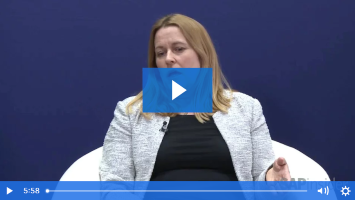Maximize Cloud Value and Efficiency
Key Takeaways
⇨ Optimize cloud cost management by aligning finance and technology
⇨ Review your organizational goals, align with business units, and evaluate current strategies
⇨ Review cloud spend to improve your budgeting and forecasting
Organizations are increasingly turning to cloud services to power their operations according to SoftwareOne’s Dan Ortman, FinOps & Cloud Services Director. The challenge ahead lies in effectively managing cloud spending. Costs can quickly spiral out of control leading to unnecessary expenditures and missed opportunities.
Enter FinOps, a practice that bridges the gap between the finance and technology teams, to create an efficient approach to cloud cost management. The potential benefits are substantial, but a business case for implementing FinOps within an organization is often a necessary step towards adoption. Ortman takes us through ten steps to building a case.
1: Define Organizational Goals. Understand how FinOps can contribute to the company’s objectives. Businesses stand to save significant funds with studies showing that over 30% of cloud spend is wasted annually. Improved budgeting and forecasting can allow organizations to make better decisions and allocate resources more effectively.
2: Gather Information on Business Units. Identify key players and understand their decision-making processes, and key performance indicators (KPIs). FinOps can standardize practices across the board to promote consistency and efficiency.
3: Acknowledge Pros and Cons of Current Strategies. Highlighting the limitations of existing cloud spending management strategies is crucial in gaining support for FinOps. By addressing the current inadequacies, decision-makers can better appreciate the potential benefits of a more streamlined approach.
4: Present the Recommended Action: Establish a FinOps Practice. This is where the case champions the adoption of FinOps in the organization. A brief overview of FinOps, encompassing its three phases – Inform, Optimize, and Operate – provides a framework for understanding its impact on cloud cost management. Introducing unit economics as a performance metric for cloud costs also helps make the case more compelling.
5: Connect FinOps with Company Goals. Make the connection between FinOps implementation and overall business objectives. Illustrate how FinOps can drive value from cloud spending – by cost reduction or funding new projects.
6: Review the Expected Benefits. FinOps can yield rapid returns, often paying for itself within 30 days. Empower unit leaders with information that leads to more prudent decision-making and greater cost accountability.
7: Explain How FinOps Leads to Expected Benefits. Demonstrate how benefits materialize through the FinOps process. Clean data and visibility drive decisions and showcase the value of accurate information.
8: Explain How Results Will Be Measured. Metrics such as cloud spend as a percentage of overall revenue and forecasting accuracy underscore FinOps’ impact on the bottom line.
9: Review the Costs to Implement a FinOps Practice. Any business case must address the financial investment required. From purchasing cloud spend tracking tools to training staff and hiring FinOps practitioners, the costs must be transparent.
10: Review the Costs of Taking No Action. Ignoring FinOps can lead to inefficiencies, missed opportunities, inaccurate forecasts, and falling behind competitors.








